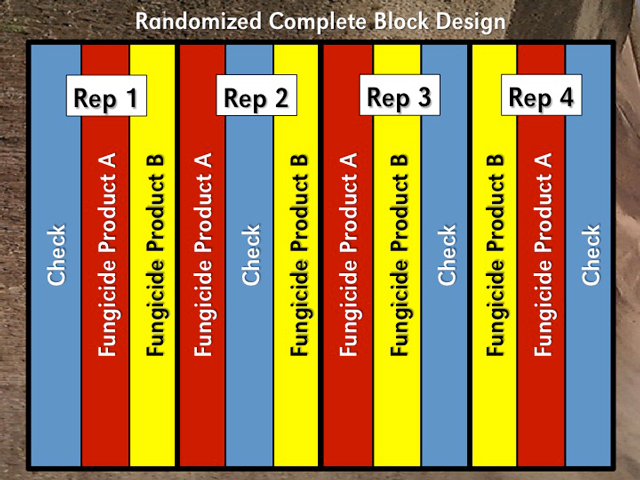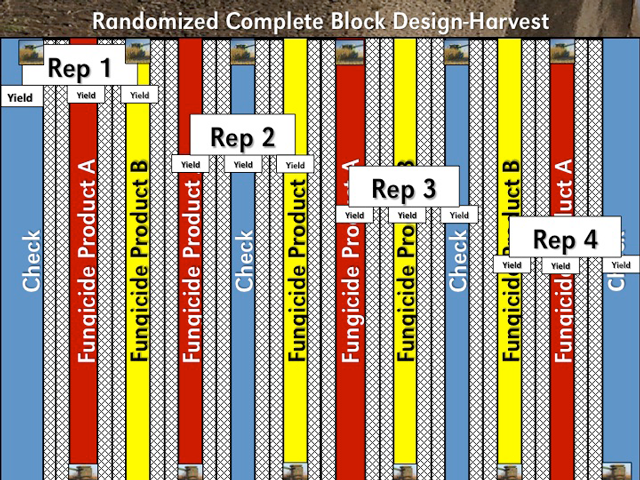To compare multiple products, such as how two fungicides perform when applied to corn at the V5 growth stage, consider using a three or more treatment design. For example, you might use this when you see two products advertised, one of which has been recommended by your crop consultant or co-op. You decide to test both products versus an untreated check in your field at V5 (5 leaf stage of corn).
Your treatment comparisons would be:
• Untreated Check
• Fungicide Product A
• Fungicide Product B
A study with three or more treatments could be set up in a randomized complete block design such as shown in Figure 8. With this design use a minimum of four replications and preferably five if you have enough land. Each block contains all treatments with randomized assignment of treatments to strips within each block (easily done with the flip of a coin). Strips within blocks should represent similar soil and other conditions; conditions from one block to another can vary. In variable fields blocks may not be adjacent as shown in Figure 8. The width of the comparison field strip for your trials depends on your equipment widths. The length of each treatment does not need to go across the whole field; a strip can be half of the field or less.
Considerations: For this study, because fungicide can drift when sprayed, you should include a buffer around your treatments. Thus, you need to plan your design to work with the size of your equipment.
Harvesting:
With this study, you would harvest the center rows of each treatment. For example, if you had an eight-row combine, you would harvest the center eight rows of untreated check, leaving the buffer rows on either side. The center eight rows of untreated check would then be compared to the center eight rows of the Fungicide Product A and center eight rows of Fungicide Product B to make the first rep (Figure 9).


